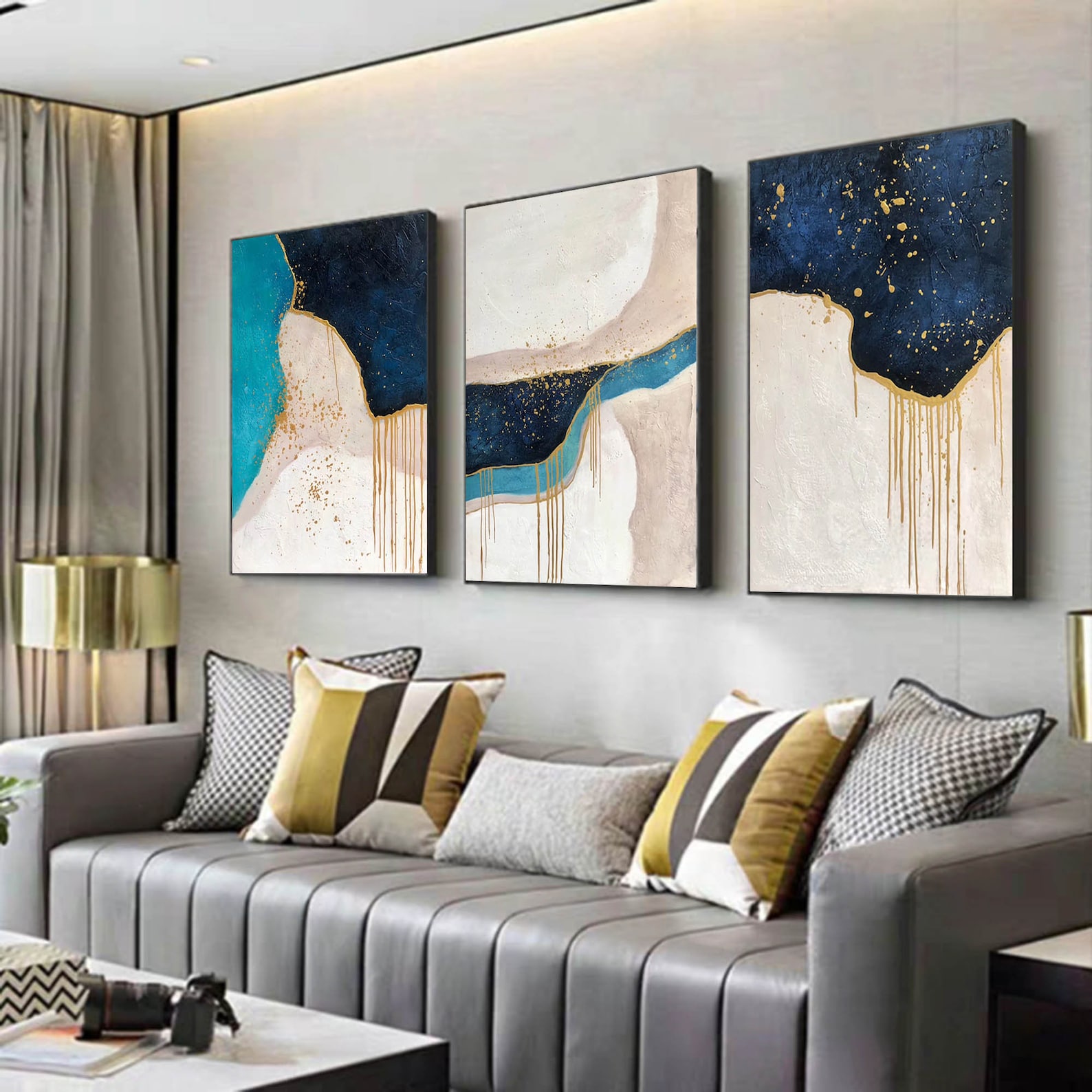DIY living room abstract wall art painting
DIY Living Room Abstract Wall Art Painting
Abstract wall art is a great way to add personality and style to your living room. It can also be a relatively inexpensive way to update your space. If you're feeling creative, you can even try your hand at painting your own abstract wall art.
This guide will walk you through the steps of creating your own DIY abstract wall art painting. We'll provide tips on choosing colors, selecting a medium, and creating a composition that will make a statement in your living room.
Choosing Colors

The colors you choose for your abstract wall art will play a big role in the overall look and feel of the piece. When choosing colors, it's important to consider the colors of your existing décor. You want to create a cohesive look that flows well with the rest of your room.
If you're not sure where to start, you can always choose a neutral color palette. Neutral colors like black, white, gray, and beige are always a safe bet. They're easy to work with and can be paired with a variety of other colors.
If you're feeling more adventurous, you can try using bolder colors. Just be careful not to go overboard. Too many bright colors can be overwhelming and make your living room look cluttered.

Here are a few tips for choosing colors for your abstract wall art:
- Use a color wheel to help you choose colors that work well together. The color wheel is a helpful tool for understanding how colors interact with each other. It can help you create a harmonious color scheme that will look great in your living room.
- Start with a neutral color base. This will give you a foundation to build on and will help to keep your abstract wall art from looking too busy.
- Add pops of color with accents. If you want to add a little more personality to your abstract wall art, you can do so by adding pops of color with accents. This could include using a bright color for the outline of your painting, adding a splash of color to the background, or using a different color for the brushstrokes.
Selecting a Medium

The medium you choose for your abstract wall art will depend on your skill level and the desired effect. If you're a beginner, you may want to choose a medium that is easy to use and forgiving, such as acrylic paint. Acrylic paint is water-based and dries quickly, so it's easy to make mistakes and correct them.
If you're more experienced, you may want to try a more challenging medium, such as oil paint or watercolor. Oil paint is slow-drying and allows for more layering and blending, while watercolor is a transparent medium that can create a delicate and ethereal effect.
Here are a few tips for selecting a medium for your abstract wall art:
- Consider your skill level. If you're a beginner, choose a medium that is easy to use and forgiving.
- Think about the desired effect. What kind of look do you want to achieve? Do you want your painting to be bold and expressive, or delicate and ethereal?
- Experiment with different mediums. Don't be afraid to try different mediums until you find one that you're comfortable with and that creates the desired effect.
Creating a Composition
The composition of your abstract wall art is just as important as the colors and medium you choose. The composition is the arrangement of the elements in your painting, and it can have a big impact on the overall look and feel of the piece.
When creating a composition, it's important to consider the following factors:
- Balance. Your painting should be balanced, both horizontally and vertically. This means that the elements on the left side of the painting should be roughly equal in weight to the elements on the right side, and the elements at the top of the painting should be roughly equal in weight to the elements at the bottom.
- Emphasis. Your painting should have a focal point, which is the element that draws the viewer's eye. The focal point can be created by using a bright color, a bold brushstroke, or a contrasting shape.
- Movement. Your painting should have a sense of movement, either through the use of lines, shapes, or colors. This can help to create a more dynamic and interesting piece of art.
Here are a few tips for creating a composition for your abstract wall art:
- Start with a simple sketch. This will help you to plan out the overall composition of your painting.
- Use a variety of shapes, lines, and colors. This will help to create a more interesting and visually appealing piece of art.
- Don't be afraid to experiment. Don't be afraid to try different things until you find a composition that you're
